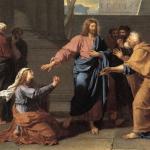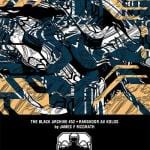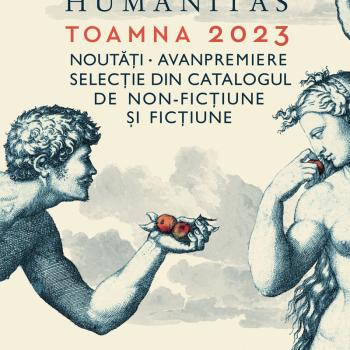Jonathan Foye asked me some questions with a view to writing an article about my book, What Jesus Learned from Women for the Australian periodical Insights. I thought I would share my full answers here. But first a link to the article, which you should definitely read. Now for that conversation in full:
1) For those who haven’t heard about it yet, how would you describe the book?
My new book What Jesus Learned from Women is an effort to take the humanity of Jesus completely seriously and to ask a neglected question: what did Jesus learn from the women that he knew? The neglect of this question is due, I believe, to a tendency to deny Jesus’ humanity in practice (even among those who affirm it as part of their creeds or statements of faith) and the influence of patriarchy ancient as well as modern. In relation to the former, unless one denies that Jesus was a human being then he learned to speak and in other ways went through the same phases of development as other human beings. The Gospel of Luke tells us this explicitly: Jesus grew in wisdom (i.e. he learned) and either stature or maturity (Luke 2:52). All Christians today, as far as I can tell, do not deny that Jesus grew in size over time. Why is there a tendency to deny or at least ignore the other ways that he must have grown as a human being? If no one else taught Jesus, his mother surely did. The point about patriarchy affects things because women are neglected in the literature ancient authors, mostly men, composed. So often we know about an important encounter with a woman in the life of Jesus, yet we are not even told her name.
Nevertheless, it is one of the exciting things that emerged as I worked on the book that, as soon as one begins asking the question of what Jesus learned from the women he encountered, answers began to come into focus in many stories in which this aspect of what was going on had been neglected. The issue is thus not just with ancient authors, but with us as readers. There are things our sources do not tell us, and so if we do not want to perpetuate their silencing and marginalizing of women, we may need at times to fill in the gaps in what they provided to us. But in other instances, we do not see things that are genuinely there in the text because we are not asking the questions that will bring those answers to light.
2) How did the idea for the book come about?
The idea for the book was prompted by a student who approached me about writing an honors thesis, who was interested in exploring the relationship between her Christian faith and her feminist convictions. As I thought about what kind of research I could supervise that would connect with my own areas of expertise, the place of women in early Christianity was an obvious direction to go. Yet whether and what Jesus taught women has been treated quite a bit, and so I suggested it might be interesting to flip that around and ask what women taught Jesus, what he learned from them. Initially I was thinking of his mother, of course, and the other example that is usually thought of in connection with this topic, the Syrophoenician woman who offered a clever retort to what Jesus said to her (Mark 7:27-28). As I thought about it, I realized that the same thing could be said about other stories in the Gospels in which Jesus talks with women. When the disciples come back to him at the well in Samaria and are surprised to find him having a conversation with a woman, it tells us this was not his usual practice (John 4:27). The encounter changed and influenced him.
Likewise when Mary of Bethany sits at Jesus’ feet and her sister (presumably among others) objected, we are not told that Jesus reminded Martha of his teaching about women learning and asked her why she wasn’t following it. Rather, he says that Mary has chosen the better portion, and he won’t take it away from her (Luke 10:42). There too it seems to be Mary’s initiative, and even if it was in response to something Mary perceived about Jesus and his outlook, it also seems clear that it influenced Jesus. Time and again, when I asked about Jesus learning from his encounters, the text provided answers, answers that its authors in no way emphasized or showed particular interest in, but for that very reason strike me as likely to reflect something historical.
3) In your research for the book, was there anything in particular that you were surprised to find?
There are so many things! This is the book from which I believe I have learned the most in the process of writing it, and that is saying a lot, since I feel I have learned something as a result of every major research project I’ve pursued. This book nonetheless stands out in that regard. The things I mentioned in answering your previous question are themselves on this list, things I didn’t expect to see in the text but which stood out once I asked the pertinent question. Others include the subject of an article I wrote for Biblical Archaeology Review that reflects the research for the book. Readers of John 8 have consistently wondered what Jesus wrote or drew on the floor and why. I’m not going to say I have come up with the definitive solution to that mystery, but I have a new interpretation to offer that I believe deserves consideration, and despite the centuries of attention and speculation, I think it is nonetheless a new proposal.
Another is the inclusion of a chapter on Joanna. When I began writing, I didn’t plan to include a chapter on her, not because she isn’t a fascinating individual, but because I didn’t think I would have enough to say. The possibility of saying more emerges from a suggestion that a couple of other scholars have made that Joanna in the Gospel of Luke is the same person as Junia mentioned in Paul’s Letter to the Romans. I did not initially think there was anything more than speculation to that suggestion. But as I sought to coordinate the little information we have about both, the threads seemed to be connected beneath the surface, or at least, if one viewed them as connected a distinctive and consistent pattern emerged. This was exciting not only because it meant I could say more about a woman who was clearly an influential leader in the early Christian movement. This also brings Paul the Apostle more closely into the orbit of the historical Jesus. It raises the possibility that this relative, who Paul says was in Christ before him (Romans 16:7), and others like her may have been among the motivations for Paul to oppose the movement. Often we may disapprove of some school of thought or group in an abstract way, but if relatives get involved in it, it may prompt us to more direct and fierce opposition. That was another chapter that I learned from.
That is perhaps the key thing I’d emphasize: I went into this hoping to learn about Jesus by inquiring into the women he learned from. I found that they not only taught Jesus, and taught me about Jesus, but listening to them taught me a great deal as well.
4) Is there anything else you’d like to add?
In writing about ancient women, as I have already said, if one doesn’t tell their story in some way because ancient authors do not give us all the information we feel we need in order to do so, we contribute to the silencing of them, and that in turn sometimes serves to support efforts to keep women silent in our own time. One way I sought to give voice to the women who are the focus of each chapter was to try to tell at least some small part of their story from their perspective. Each chapter thus includes a little historical fiction. I initially thought this would be a good way of making the historical research in the book accessible and interesting to a wider audience. I soon discovered that trying to narrate the story is also an extremely rigorous method of evaluating our reconstructions of the past. It may sound plausible in academic prose, but if we cannot imagine the motives and conversations that would be required for the events to unfold as we suggest, then something is wrong.
It is my hope that the book will get serious attention from scholars and historians, but will also be useful as a textbook for classrooms and a basis for discussion in church groups and book clubs. I also want to mention the wonderful cover artwork by Macey Dickerson. She read a draft of the book and found inspiration in the story of the Samaritan woman as I told it. Her artwork really does capture the essence of the book in a real way. We are seeing her through Jesus’ eyes, or rather over Jesus’ shoulder. She is his conversation partner, with something to offer as well as things that she will learn and take away from the encounter. I suspect that sometimes we resist the idea of a Jesus who learned because we think that, if we then stand with him, we needn’t learn and grow either. The book, like the woman in the cover art, stands offering an opportunity for mutually-transformative conversation and dialogue. I hope readers will accept the invitation and will benefit from it!
Of related interest:
An interview with Jaime Clark-Soles about her new book
Maria Evans perpetuates a widespread but problematic assumption about the Samaritan woman at the well, but her article about her and other nameless women in the Gospels is still worth drawing attention to.
Roche Coleman published an article, “Was Eve the first femme fatale?”
Sententiae Antiquae shared a quote about Perictione and the “harmonious woman.”
Let me also say once again how delighted I am that my book is available just in time for Women’s History Month. Such perfect timing! I hope the convergence leads to interesting conversations around the book.














